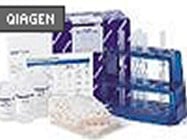

The bont gene (LC759602) has not been previously reported, and we propose its designation as a new subtype of C. Detailed analysis revealed that the bont gene (LC759602) had the bont/C gene or the bont/CD gene in the protease domain (LC) and the translocation domain (H N), as well as the bont/DC gene in the receptor-binding domain (H C) ( Table Figure). In comparison with other known bont genes, the bont gene of the strain sequenced in this study had the highest amino acid sequence similarity with the bont/C gene (90%) but was partially different from the reference bont/C gene ( Table). The obtained contig was assembled from reads of 59× coverage and 29 kbp in size. We analyzed sequencing data using CLC Genomics Workbench 22.0.2 (QIAGEN). We prepared genome-sequencing libraries using the QIAseq FX DNA Library Kit (QIAGEN) and sequenced the samples on the Illumina iSeq 100 ( ). botulinum with 20 mg/mL lysozyme in 20 mM Tris-HCl, 2 mM EDTA, and 1% Triton X-100 (pH 8.0), we extracted DNA using a QIAamp DNA Mini Kit (QIAGEN, ). The next-generation sequencing method was as follows: after treating C. Next-generation sequencing data revealed full-length coding regions of the bont gene of the isolated strains (GenBank accession no. We neutralized the toxin present in the specimens with type C botulinum antitoxin serum, and the isolated strain was found to carry the bont/C gene using PCR targeting the bont genes ( 3). A commercially prepared chicken dish was suspected to be the cause, but because no food was remaining, we were unable to conduct tests on it. botulinum were detected in 3 of the 4 specimens. A meal eaten in a domestic residence was the assumed cause, and 4 patients were affected. In 2021, foodborne botulism occurred in Kumamoto, Japan. Schematic diagrams of each functional domain between BoNT (C, CD, DC, D, and LC759602) in study of novel type C botulism strain in household outbreak, Japan. However these products are no longer under development.Figure. Hardware Įarly on, the company initially presented own-developed high-performance computing solutions, focusing on accelerating open source algorithms such as HMMER, Smith-Waterman and ClustalW, using FPGA technology.
#Qiagen workbench free#
In 2020, CLC bio released a free plug-in that enables workflow execution on AWS directly from the CLC Genomics Workbench desktop software. In 2019, this platform was adapted for and approved for use in AWS GovCloud. In 2017, CLC bio launched their CLC Genomics Cloud Engine as a command-line driven platform for cloud-based bioinformatics workflow execution on Amazon Web Services. Features include read mapping and de novo assembly of high-throughput sequencing data, whole-genome detection of SNPs and structural variations, ChIP-seq, RNA-Seq, small RNA analysis, genome finishing, microbial genomics, structural biology, and functions to analyze, visualize, and compare genomic, transcriptomic, and epigenomic data. pathway analysis, genomics, and other omics).
#Qiagen workbench software#
Īs additional capabilities were added to the software platform, it was eventually split into several themed Workbenches and plugins with collections of features relevant to different applications (e.g. In 2010, CLC bio was notable as the first commercial platform for bioinformatics analysis that utilized a graphical user interface for building, managing, and deploying analysis workflows as well as command-line tools, a SOAP and REST API, and later, the ability to run containerized tools. CLC bio developed some of their own open source algorithms, as well as their own SIMD-accelerated implementations of several existing popular applications.
#Qiagen workbench mac os#
Software ĬLC bio's main activities were in software development for desktop ( Mac OS X, Windows, and Linux), enterprise, and cloud software for analysis of biological data. ĬLC bio was acquired by QIAGEN in 2013 and merged into its bioinformatics research and development division with several other purchased platforms in 2014. By 2012, it had additional offices in Cambridge, Massachusetts, Tokyo, Taipei and Delhi, with staff largely from research backgrounds (30% having a PhD) and had built a userbase of around 250,000 users in both academic institutions and biotechnology companies. Its product's development was also partly funded by collaborating with researchers on grant-funded projects. CLC bio was a bioinformatics software company that developed a software suite subsequently purchased by QIAGEN.ĬLC bio started commercial activities on Januheadquartered in Aarhus, Denmark.


 0 kommentar(er)
0 kommentar(er)
